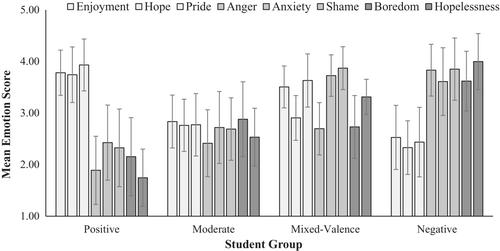First-year students' achievement emotions at university: A cluster analytic approach to understand variability in attendance and attainment
Abstract
Background
Students' initial experiences at university often shape their attendance and attainment. For some students, university is a positive experience, whereas others seemingly struggle and have more negative emotions. Unearthing distinctions in first-year students' emotionality may be valuable in understanding their academic engagement and performance.
Aims
The study's aim was to identify distinct profiles of students based on their achievement emotions and explore whether these profiles differed in university attendance and attainment. At least three emotional profiles were hypothesized (positive; moderate; negative) with a positive profile expected to display the highest attendance and attainment.
Sample
Participants were 294 first-year undergraduate students from a university in the United Kingdom (Mage = 19.33 years; 127 men; 162 women).
Methods
Students completed self-report measures of eight achievement emotions for general learning. Attendance and attainment data were collected from official records. Hierarchical cluster analysis was performed to profile students on their achievement emotions. Analysis of covariance explored profile differences in attendance and attainment.
Results
Four emotional profiles emerged: positive; moderate; negative; mixed-valence (both positive and negative activating emotions). The positive and mixed-valence groups displayed equally high attendance compared to the moderate and negative groups. The positive group obtained higher academic attainment than the mixed-valence and negative emotion groups, but not the moderate group.
Conclusions
The findings highlight the diverse emotional experiences of first-year university students and the existence of co-occurring positive and negative activation emotions. This evidence may be of practical worth to educators in understanding variability in students' emotions, attendance and attainment.


 求助内容:
求助内容: 应助结果提醒方式:
应助结果提醒方式:


